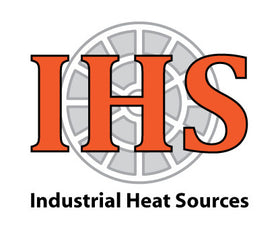{"id":4306015912013,"title":"Nexthermal RTDs","handle":"products-nexthermal-rtds","description":"\u003cp\u003eResistance temperature detectors (RTDs) use the change in the electrical resistance of a wire-wound device with a positive temperature coefficient to signal a change in temperature.\u003c\/p\u003e\u003cp\u003eAs a standard, Nexthermal uses 100-ohm class B platinum wire-wound elements manufactured to the DIN EN60751 standard (formerly IEC 751). While more expensive, RTDs offer more accurate linear readings than thermocouples. However they have longer response times, are not “tip sensitive,” and are more subject to damage from vibration.\u003c\/p\u003e\u003ch2\u003eTube and Wire Construction\u003c\/h2\u003e\u003cp\u003eThis type of sensor offers low-cost construction for a wide range of applications up to 900°F (482°C).\u003c\/p\u003e\u003cp\u003eA metal tube is used to provide additional protection to the RTD element, which is located at the tip.\u003c\/p\u003e\u003cp\u003eThe standard 304 stainless steel tube is available in 1\/8-in., 3\/16-in., and 0.25-in. diameters.\u003c\/p\u003e\u003ch2\u003eMineral Insulated Construction\u003c\/h2\u003e\u003cp\u003eThis type of sensor offers a more rugged, shock-resistant construction for higher operating temperatures. It is flexible enough to be bent around a mandrel to a radius of twice the outside diameter of the sheath.\u003c\/p\u003e\u003cp\u003eA compressed mineral insulated powder, usually magnesium oxide (MgO), is used to insulate and protect the wires inside a metal sheath. The sheath material is selected to provide the best corrosion resistance for your application.\u003c\/p\u003e\u003ch2\u003e\u003cspan\u003eNexthermal Advantage\u003c\/span\u003e\u003c\/h2\u003e\u003cul\u003e\u003cli\u003eAvailable ANSI and DIN\u003c\/li\u003e\u003c\/ul\u003e","published_at":"2019-10-24T10:49:36-04:00","created_at":"2019-10-24T10:49:36-04:00","vendor":"Nexthermal","type":"","tags":["Controllers\/Sensors","Nexthermal","Process Heaet","Tools"],"price":0,"price_min":0,"price_max":0,"available":true,"price_varies":false,"compare_at_price":null,"compare_at_price_min":0,"compare_at_price_max":0,"compare_at_price_varies":false,"variants":[{"id":30986945429581,"title":"Default Title","option1":"Default Title","option2":null,"option3":null,"sku":"N-RTD","requires_shipping":true,"taxable":true,"featured_image":null,"available":true,"name":"Nexthermal RTDs","public_title":null,"options":["Default Title"],"price":0,"weight":227,"compare_at_price":null,"inventory_management":null,"barcode":null,"requires_selling_plan":false,"selling_plan_allocations":[]}],"images":["\/\/ihshotair.com\/cdn\/shop\/products\/Screen_Shot_2016-10-31_at_10.36.31_AM.png?v=1572456604"],"featured_image":"\/\/ihshotair.com\/cdn\/shop\/products\/Screen_Shot_2016-10-31_at_10.36.31_AM.png?v=1572456604","options":["Title"],"media":[{"alt":"Nexthermal RTDs","id":5533352722509,"position":1,"preview_image":{"aspect_ratio":1.155,"height":219,"width":253,"src":"\/\/ihshotair.com\/cdn\/shop\/products\/Screen_Shot_2016-10-31_at_10.36.31_AM.png?v=1572456604"},"aspect_ratio":1.155,"height":219,"media_type":"image","src":"\/\/ihshotair.com\/cdn\/shop\/products\/Screen_Shot_2016-10-31_at_10.36.31_AM.png?v=1572456604","width":253}],"requires_selling_plan":false,"selling_plan_groups":[],"content":"\u003cp\u003eResistance temperature detectors (RTDs) use the change in the electrical resistance of a wire-wound device with a positive temperature coefficient to signal a change in temperature.\u003c\/p\u003e\u003cp\u003eAs a standard, Nexthermal uses 100-ohm class B platinum wire-wound elements manufactured to the DIN EN60751 standard (formerly IEC 751). While more expensive, RTDs offer more accurate linear readings than thermocouples. However they have longer response times, are not “tip sensitive,” and are more subject to damage from vibration.\u003c\/p\u003e\u003ch2\u003eTube and Wire Construction\u003c\/h2\u003e\u003cp\u003eThis type of sensor offers low-cost construction for a wide range of applications up to 900°F (482°C).\u003c\/p\u003e\u003cp\u003eA metal tube is used to provide additional protection to the RTD element, which is located at the tip.\u003c\/p\u003e\u003cp\u003eThe standard 304 stainless steel tube is available in 1\/8-in., 3\/16-in., and 0.25-in. diameters.\u003c\/p\u003e\u003ch2\u003eMineral Insulated Construction\u003c\/h2\u003e\u003cp\u003eThis type of sensor offers a more rugged, shock-resistant construction for higher operating temperatures. It is flexible enough to be bent around a mandrel to a radius of twice the outside diameter of the sheath.\u003c\/p\u003e\u003cp\u003eA compressed mineral insulated powder, usually magnesium oxide (MgO), is used to insulate and protect the wires inside a metal sheath. The sheath material is selected to provide the best corrosion resistance for your application.\u003c\/p\u003e\u003ch2\u003e\u003cspan\u003eNexthermal Advantage\u003c\/span\u003e\u003c\/h2\u003e\u003cul\u003e\u003cli\u003eAvailable ANSI and DIN\u003c\/li\u003e\u003c\/ul\u003e"}

